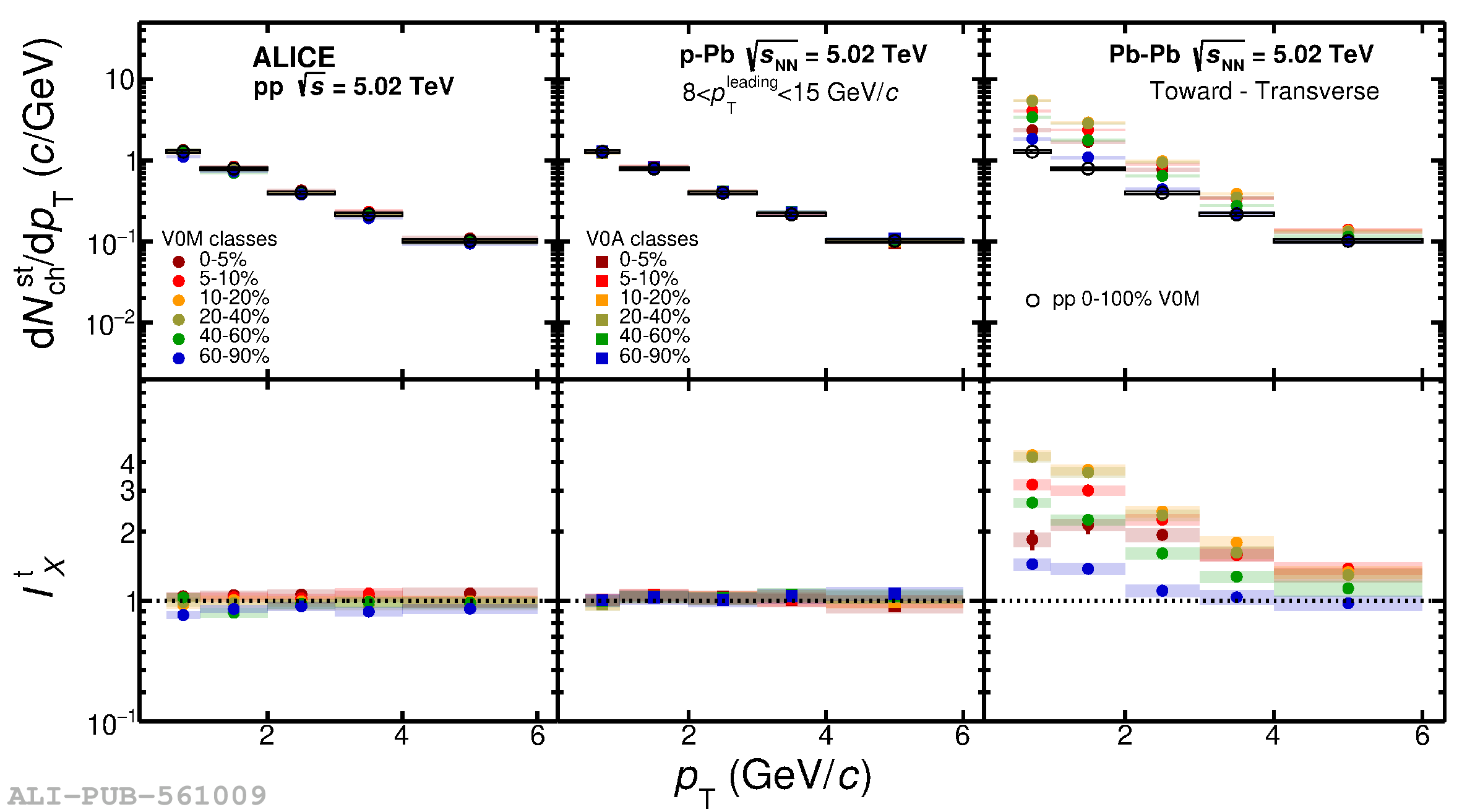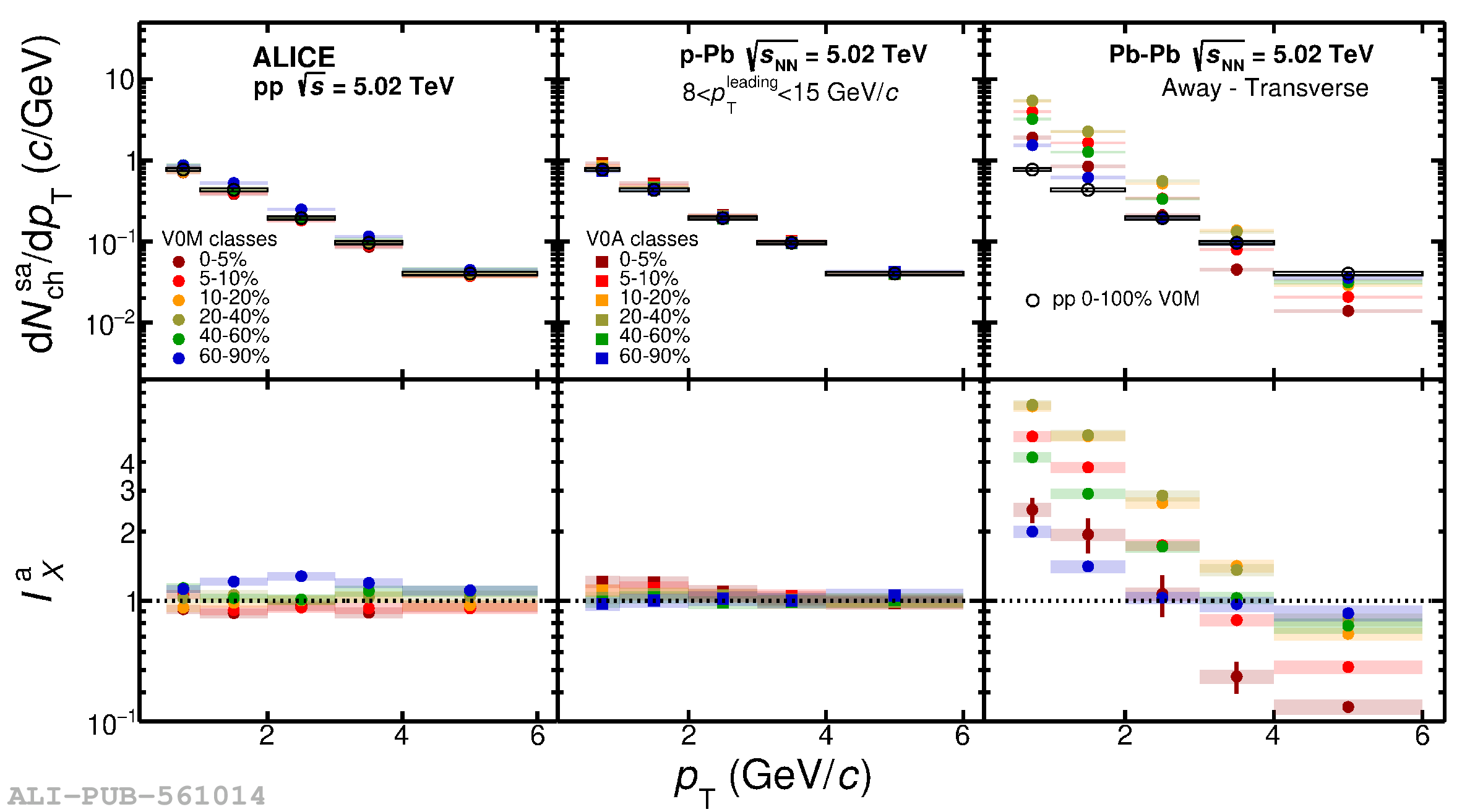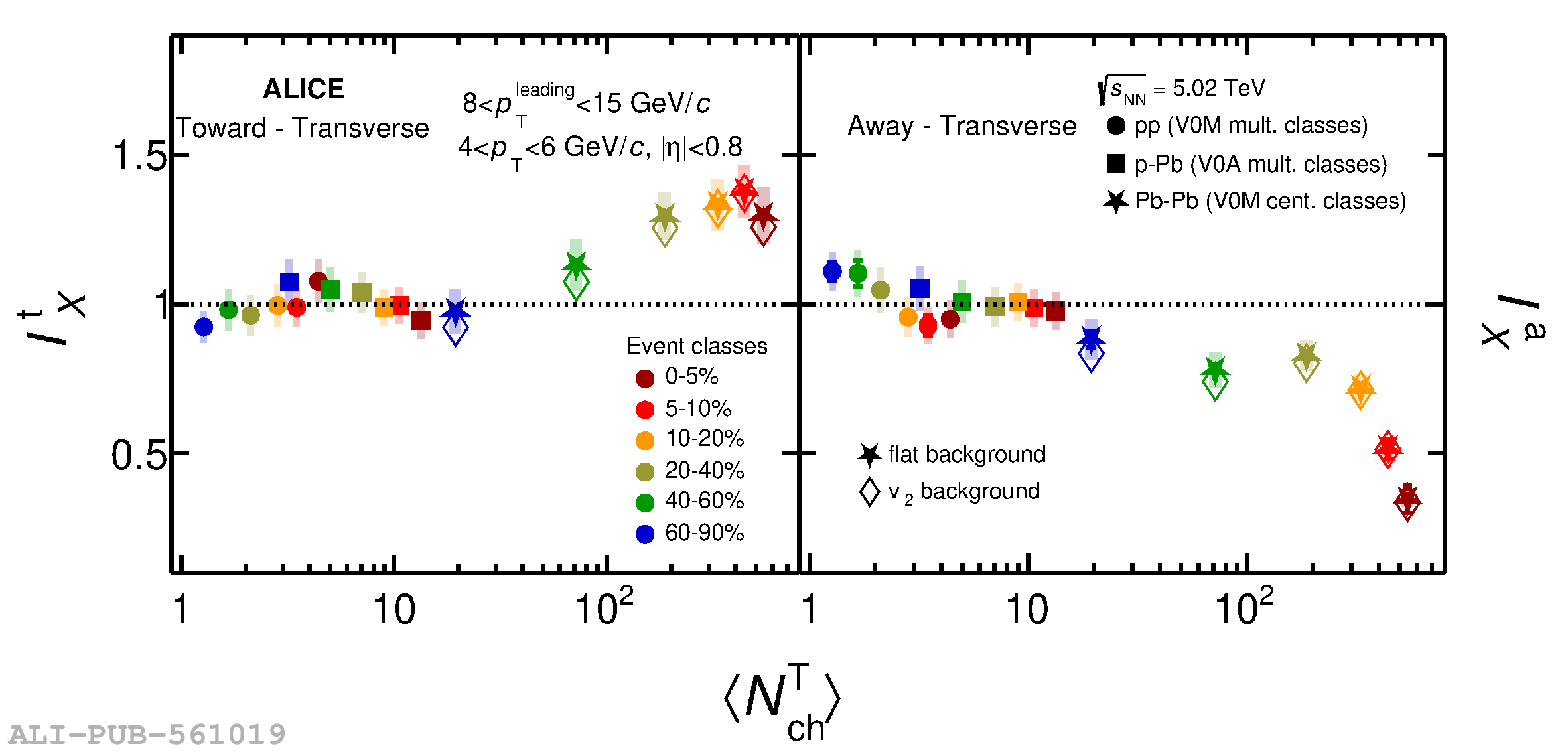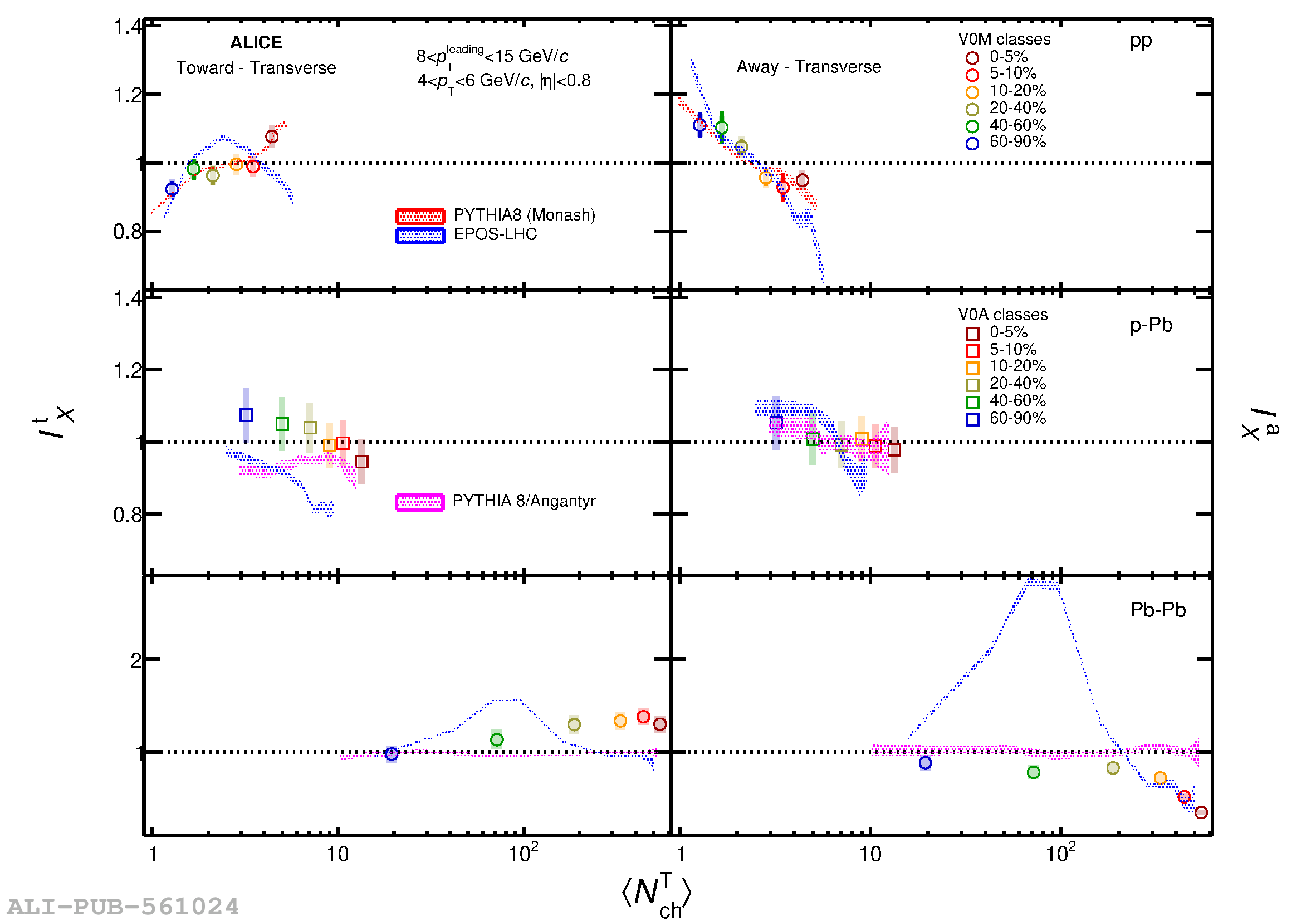This letter reports measurements which characterize the underlying event associated with hard scatterings at mid-pseudorapidity ($|\eta|<~0.8$) in pp, p$-$Pb and Pb$-$Pb collisions at centre-of-mass energy per nucleon pair, $\sqrt{s_{\rm NN}}=5.02$ TeV. The measurements are performed with ALICE at the LHC. Different multiplicity classes are defined based on the event activity measured at forward rapidities. The hard scatterings are identified by the leading particle defined as the charged particle with the largest transverse momentum ($p_{\rm T}$) in the collision and having $8 <~ p_{\rm T} <~ 15$ GeV/$c$. The $p_{\rm T}$ spectra of associated particles ($0.5 \leq p_{\rm T}<~6$ GeV/$c$) are measured in different azimuthal regions defined with respect to the leading particle direction: toward, transverse, and away. The associated charged particle yields in the transverse region are subtracted from those of the away and toward regions. The remaining jet-like yields are reported as a function of the multiplicity measured in the transverse region. The measurements show a suppression of the jet-like yield in the away region and an enhancement of high-$p_{\rm T}$ associated particles in the toward region in central Pb$-$Pb collisions, as compared to minimum-bias pp collisions. These observations are consistent with previous measurements that used two-particle correlations, and with an interpretation in terms of parton energy loss in a high-density quark gluon plasma. These yield modifications vanish in peripheral Pb$-$Pb collisions and are not observed in either high-multiplicity pp or p$-$Pb collisions.
Phys. Lett. B 843 (2022) 137649
HEP Data
e-Print: arXiv:2204.10157 | PDF | inSPIRE
CERN-EP-2022-059
Figure group






